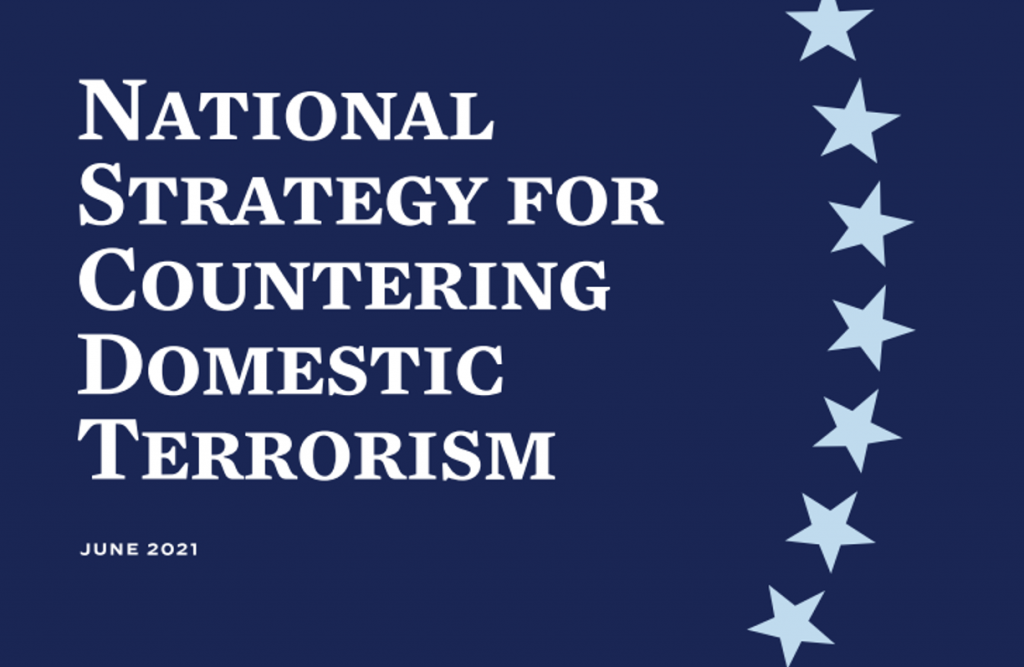US Publishes National Strategy for Countering Domestic Terrorism
This month, the US National Security Council released the new National Strategy for Countering Domestic Terrorism. Drawing on the historical examples like that of the Ku Klux Klan and recent events such as those surrounding the 6 January event, the strategy presents domestic terrorism as a persistent and evolving threat.
The strategy defined domestic terrorism as:
“Activities that involve acts dangerous to human life that are a violation of the criminal laws of the United States or of any State; appear to be intended to intimidate or coerce a civilian population, to influence the policy of a government by intimidation or coercion, or to affect the conduct of a government by mass destruction, assassination, or kidnapping; and occur primarily within the territorial jurisdiction of the United States”
The strategy was clear in its message that the threat of terrorism comes from all over the ideological spectrum and was explicit in its condemnation of all violence. Efforts were made to highlight political neutrality and respect for civil liberties with Attorney General Merrick Garland, speaking on behalf of the Department of Justice, reminding that hateful speech is protected speech. The report named a large number of ideologies motivating extremism:
- racially or ethnically motivated violent extremists
- self–proclaimed “militias” and militia violent extremists who take steps to violently resist government authority or facilitate the overthrow of the U.S. Government based on perceived overreach
- anti-capitalist anarchist violent extremists
- sovereign citizen violent extremists
- single–issue ideologies related to abortion–, animal rights–, environmental–, or involuntary celibate–violent extremism

The strategy observed that the threat of domestic terrorism often comes from “lone actors or small groups of informally aligned individuals”. So, while ANTIFA and the Proud Boys may be making headlines as radical groups involved in widely-covered violence, the terrorist threat largely comes from more shadowy groups.
Four strategic pillars for government response to domestic terrorism were laid out:
- To understand and share domestic terrorism–related information by enhancing domestic terrorism–related research and analysis, improving information sharing across all levels within and outside, the Federal Government and by Illuminating transnational aspects of domestic terrorism.
- To prevent domestic terrorism recruitment and mobilization to violence by strengthening domestic terrorism prevention resources and services and addressing online terrorist recruitment and mobilization to violence by domestic terrorists.
- To disrupt and deter domestic terrorism activity by enabling appropriate enhanced investigation and prosecution of domestic terrorism crimes, assessing potential legislative reforms and ensuring that screening and vetting processes consider the full range of terrorism threats.
- To confront long–term contributors to domestic terrorism
Interestingly, the document also stated that the government is trying to assess if “additional foreign entities linked to domestic terrorism can, under the relevant statutory criteria, be designated as Foreign Terrorist Organizations or Specially Designated Global 18 National Strategy for Countering Domestic Terrorism”. The possibility of designating organized groups inside the United States as terrorist and barring membership, even in relatively clear-cut cases like that of the KKK, remains unlikely due to the strong constitutional protections on freedom of assembly. Moreover, there remains fear that removing public groups would simply drive potentially dangerous individuals further underground and thus make them harder to track.
The document closed with mentions of Charleston, El Paso, Pittsburgh, Poway, and the U.S. Capitol; respect for civil rights and civil liberties; and a statement that implementation of the strategy was already underway.
The full document is available here.

